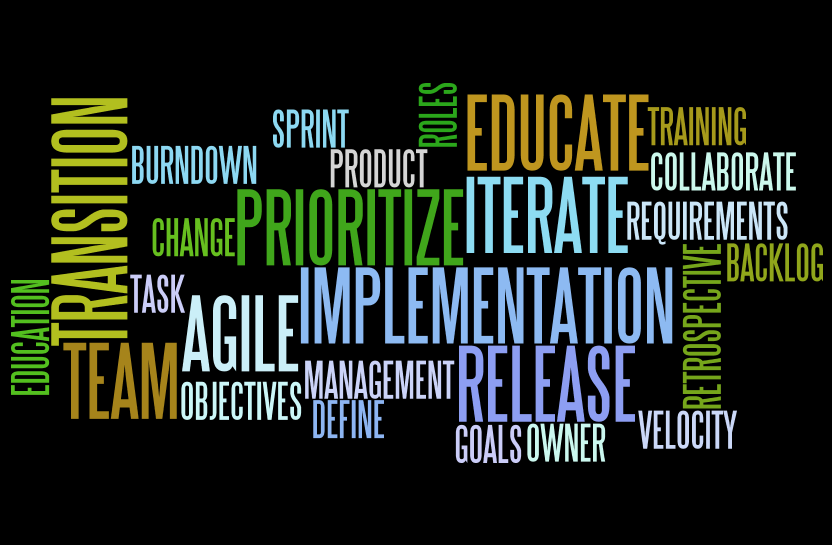You’ve done the research, you’ve performed the analysis, you’ve made the decision; you’re going agile. Great, now what? Whether implementing agile at a project, program, or enterprise level, here are some tips for laying down the groundwork for a successful transition.
————————————————————
1) DO: Focus on the key characteristics
While there are 31+ flavors of agile, they all share the same fundamental ingredients; incremental development, increased communication, frequent reviews and releases, and adaptive and evolving requirements. No matter which framework or combination of frameworks you decide on (Scrum, Kanban, Extreme Programming, etc.), it is important not to lose sight of these high-level principles or get caught up in the rigid specifics of a particular framework, which brings us to number two…
————————————————————
2) DON’T: Obsess about the nitty-gritty (at first)
Scrum, for example, is a highly detailed framework under the agile umbrella, complete with a meticulous set of activities, artifacts, and metrics. Time-boxed sprints, user stories, story points, burndown charts, and velocity calculations are all great techniques for supporting the agile process and measuring performance; however, these Scrum specifics are in place to support the high-level principles and key characteristics mentioned above, not to disrupt the process and impede your agile implementation. When first implementing agile, it’s crucial to get a win. Focus on development and results. Don’t waste endless hours debating story points or how to format your burndown chart, and if you need to extend a sprint by a week, break the rules and go for it. If at any point you find yourself more worried about adhering to the rules of Scrum than achieving results, take a step back and reevaluate. Don’t obsess about the nitty-gritty, at least not at first. Once you’re comfortable with the basics of agile and the key components of your chosen framework, you should then start adopting more of the detailed guidelines and metrics.
————————————————————
3) DO: Follow (at least some of) the rules
Let’s not get ahead of ourselves here. Number two isn’t suggesting that you ignore all the rules and implement an agile anarchy. There are some basic activities and artifacts that are crucial for a successful implementation, even from day one. First, product backlogs are essential for organizing business needs and high-level requirements, allowing for an organized and transparent look into the project objectives and priorities. Likewise, identifying roles and responsibilities is another must. Call them what you want – Product Owners, Business Leads, Customer Representatives, etc.; the bottom line is that you’ll need someone to prioritize requirements, review progress, answer questions, and give final approvals and/or rejections. Lastly, retrospectives are also critical. The only way you’ll succeed and continue to succeed with agile is if you identify what is working, what isn’t working, and how you can continue to improve across projects, programs, and your entire enterprise.
————————————————————
4) DO: Educate your staff
This one’s almost too obvious – your staff can’t execute agile if they don’t know what it is. Like with any sort of change management, getting employee buy-in is key. Team members should not be learning agile on the fly, mid-project. Staff should be trained ahead of time on the principles of agile, framework specifics, and the reasons why agile is the right choice for them. Getting an early win goes a long way. It increases awareness, boosts confidence, and gets other teams excited for their shot at agile. You can’t afford for your first agile project to fail, and there’s no worse reason for failure than deciding not to educate and train your staff on what is expected of them.
————————————————————
So, you’re going agile. Now what? Well, while every project and organization is unique and will require its own unique brand of agile, these four do’s and don’ts can give you some pointers and help you along the way of your successful agile transition.




